HDAC5-mediated Smad7 silencing through MEF2A is critical for fibroblast activation and hypertrophic scar formation
- PMID: 36263180
- PMCID: PMC9576526
- DOI: 10.7150/ijbs.76140
HDAC5-mediated Smad7 silencing through MEF2A is critical for fibroblast activation and hypertrophic scar formation
Abstract
Transforming growth factor-β (TGF-β) signaling plays a key role in excessive fibrosis. As a class IIa family histone deacetylase (HDAC), HDAC5 shows a close relationship with TGF-β signaling and fibrosis. However, the effect and regulatory mechanism of HDAC5 in hypertrophic scar (HS) formation remain elusive. We show that HDAC5 was overexpressed in HS tissues and depletion of HDAC5 attenuated HS formation in vivo and inhibited fibroblast activation in vitro. HDAC5 knockdown (KD) significantly downregulated TGF-β1 induced Smad2/3 phosphorylation and increased Smad7 expression. Meanwhile, Smad7 KD rescued the Smad2/3 phosphorylation downregulation and scar hyperplasia inhibition mediated by HDAC5 deficiency. Luciferase reporter assays and ChIP-qPCR assays revealed that HDAC5 interacts with myocyte enhancer factor 2A (MEF2A) suppressing MEF2A binding to the Smad7 promoter region, which results in Smad7 promoter activity repression. HDAC4/5 inhibitor, LMK235, significantly alleviated hypertrophic scar formation. Our study provides clues for the development of HDAC5 targeting strategies for the therapy or prophylaxis of fibrotic diseases.
Keywords: HDAC5; Hypertrophic scar; MEF2A; Smad7; TGF-β.
© The author(s).
Conflict of interest statement
Competing Interests: The authors have declared that no competing interest exists.
Figures
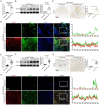

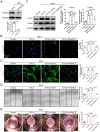
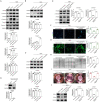
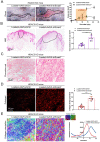
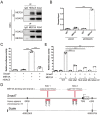
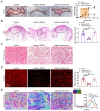
Similar articles
-
Smad7 down-regulation via ubiquitin degradation mediated by Smurf2 in fibroblasts of hypertrophic scars in burned patients.Burns. 2021 Sep;47(6):1333-1341. doi: 10.1016/j.burns.2020.12.017. Epub 2020 Dec 31. Burns. 2021. PMID: 33436154
-
Inhibition of sphingosine kinase 2 attenuates hypertrophic scar formation via upregulation of Smad7 in human hypertrophic scar fibroblasts.Mol Med Rep. 2020 Sep;22(3):2573-2582. doi: 10.3892/mmr.2020.11313. Epub 2020 Jul 9. Mol Med Rep. 2020. PMID: 32705254 Free PMC article.
-
Expression of Smad protein by normal skin fibroblasts and hypertrophic scar fibroblasts in response to transforming growth factor beta1.Dermatol Surg. 2008 Sep;34(9):1216-24; discussion 1224-5. doi: 10.1111/j.1524-4725.2008.34261.x. Epub 2008 Jun 21. Dermatol Surg. 2008. PMID: 18616749
-
Fibroproliferative effect of microRNA-21 in hypertrophic scar derived fibroblasts.Exp Cell Res. 2016 Jul 1;345(1):93-9. doi: 10.1016/j.yexcr.2016.05.013. Epub 2016 May 17. Exp Cell Res. 2016. PMID: 27207585
-
mHDA1/HDAC5 histone deacetylase interacts with and represses MEF2A transcriptional activity.J Biol Chem. 2000 May 19;275(20):15594-9. doi: 10.1074/jbc.M908437199. J Biol Chem. 2000. PMID: 10748098
Cited by
-
The translational potential of miR-26 in atherosclerosis and development of agents for its target genes ACC1/2, COL1A1, CPT1A, FBP1, DGAT2, and SMAD7.Cardiovasc Diabetol. 2024 Jan 9;23(1):21. doi: 10.1186/s12933-024-02119-z. Cardiovasc Diabetol. 2024. PMID: 38195542 Free PMC article. Review.
-
Glucocorticoids regulate the expression of Srsf1 through Hdac4/Foxc1 axis to induce apoptosis of osteoblasts.Commun Biol. 2025 Apr 4;8(1):566. doi: 10.1038/s42003-025-07989-x. Commun Biol. 2025. PMID: 40186004 Free PMC article.
-
OxInflammatory Responses in the Wound Healing Process: A Systematic Review.Antioxidants (Basel). 2024 Jul 9;13(7):823. doi: 10.3390/antiox13070823. Antioxidants (Basel). 2024. PMID: 39061892 Free PMC article. Review.
-
LMK235 ameliorates inflammation and fibrosis after myocardial infarction by inhibiting LSD1-related pathway.Sci Rep. 2024 Oct 8;14(1):23450. doi: 10.1038/s41598-024-74887-3. Sci Rep. 2024. PMID: 39379699 Free PMC article.
-
Serine/threonine kinase 3 promotes oxidative stress and mitochondrial damage in septic cardiomyopathy through inducing Kelch-like ECH-associated protein 1 phosphorylation and nuclear factor erythroid 2-related factor 2 degradation.Int J Biol Sci. 2023 Feb 21;19(5):1369-1381. doi: 10.7150/ijbs.80800. eCollection 2023. Int J Biol Sci. 2023. PMID: 37056939 Free PMC article.
References
-
- Moortgat P, Meirte J, Maertens K, Lafaire C, De Cuyper L, Anthonissen M. Can a Cohesive Silicone Bandage Outperform an Adhesive Silicone Gel Sheet in the Treatment of Scars? A Randomized Comparative Trial. Plastic and Reconstructive Surgery. 2019;143:902–11. - PubMed
-
- Coentro JQ, Pugliese E, Hanley G, Raghunath M, Zeugolis DI. Current and upcoming therapies to modulate skin scarring and fibrosis. Advanced Drug Delivery Reviews. 2019;146:37–59. - PubMed
-
- Meng XM, Nikolic-Paterson DJ, Lan HY. TGF-beta: the master regulator of fibrosis. Nat Rev Nephrol. 2016;12:325–38. - PubMed
Publication types
MeSH terms
Substances
LinkOut - more resources
Full Text Sources
Molecular Biology Databases
Research Materials

